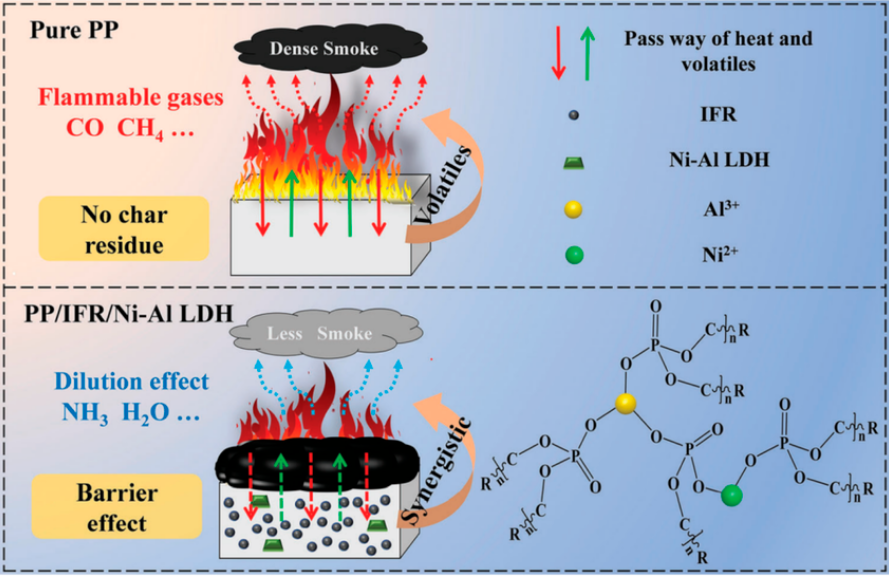Innovation and Challenges of Composite Flame Retardants in Environmental Directives
Composite flame retardants face profound innovation and challenges in complying with environmental directives. In terms of innovation, companies need to continue to promote the research and development of new materials to meet the strict requirements of environmental directives such as WEEE, ROHS and EUP. This includes not only the development of halogen-free, low-volatile, non-toxic alternative ingredients, but also ensuring that new materials can meet or exceed the level of traditional flame retardants in terms of flame retardant effect, sustainability and cost-effectiveness. Technically, improving the efficiency and performance of composite flame retardants is also one of the key challenges. Companies need to ensure that products can still effectively protect against fire threats while reducing the use of hazardous substances.
There are many challenges in achieving these innovations. The formulations of composite flame retardants are usually complex and diverse, consisting of a variety of materials and chemical components, which means that companies must conduct exhaustive material testing and certification to ensure that each component meets the strict requirements of regulations. This complexity not only increases the cost of R&D and production, but may also affect the market competitiveness of products. At the same time, the application scenarios of composite flame retardants cover multiple industries and product types, so companies need to carry out customized development according to the needs of different industries to ensure the applicability and stability of flame retardants in various materials and products.
As the market environment and regulatory requirements continue to change, companies also need to respond to the dynamic adjustment of regulations and the emergence of new requirements. This means continuously investing resources in technology and regulatory compliance to ensure that products always meet the latest environmental standards and are able to respond to inspections and reviews by regulatory agencies. In the face of these challenges, composite flame retardant companies not only need the support of innovative spirit and technical strength, but also need to strike a balance between cost-effectiveness, market competitiveness and sustainable development. By addressing these challenges, companies can demonstrate their leading position in the field of environmental protection and make positive contributions to global sustainable development goals.
Composite flame retardant gas applications across industries.
Composite flame retardants find diverse applications across several industries due to their effectiveness in enhancing fire safety while meeting stringent environmental regulations. Here’s a breakdown of their applications:
Electronics: Composite flame retardants are crucial in electronics to protect sensitive components from fire hazards. They are used in circuit boards, casings, and insulation materials of devices like computers, smartphones, and consumer electronics. These materials must comply with ROHS directives to ensure minimal hazardous substance content.
Automotive: In the automotive industry, composite flame retardants are utilized in interior components such as dashboards, seats, wiring, and insulation materials. They help enhance the fire resistance of vehicle interiors and meet regulatory requirements under directives like EUP.
Construction and Building Materials: Composite flame retardants play a vital role in construction materials such as insulation foams, cables, pipes, and coatings. They improve the fire safety of buildings and infrastructure, ensuring compliance with local building codes and safety standards.
Textiles: Textile applications include flame-retardant fabrics used in upholstery, curtains, carpets, and protective clothing. Composite flame retardants help textiles meet fire safety regulations without compromising on fabric quality or comfort.
Others: Composite flame retardants are also used in applications like aerospace (interior materials), furniture (upholstery and padding), and industrial equipment (plastics and coatings). They provide critical fire protection in environments where fire safety is paramount.
Overall, composite flame retardants offer versatile solutions across various industries by combining different flame-retardant mechanisms such as inorganic, phosphorus-nitrogen, nitrogen, and silicon systems. This diversity allows them to cater to specific performance requirements while adhering to environmental standards, making them essential components in modern fire safety strategies.





 +86-0573-89103923 / +86 182 6841 1181
+86-0573-89103923 / +86 182 6841 1181



















